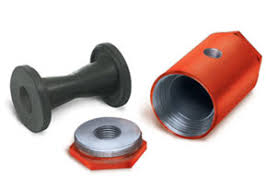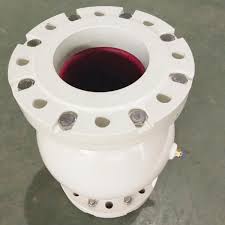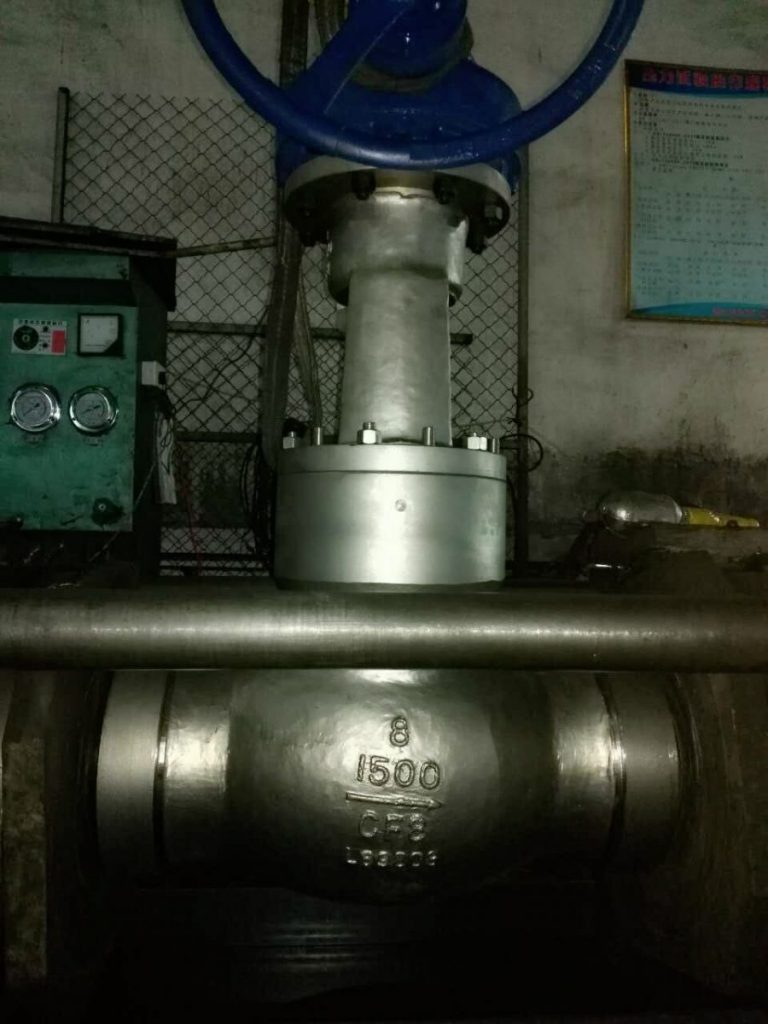Inflatable Air Operated Pinch Valve

The Application of Inflatable Air Operated Pinch Valve
The Pneumatic Inflatable Pinch Valve is a versatile industrial valve solution that excels in a variety of applications. Its unique Self-Inflating Pinch Valve design allows for reliable flow control, even in the presence of abrasive or corrosive media. The Industrial Inflatable Pinch Valve from Cameron is particularly well-suited for tasks such as pipe sealing, slurry management, and emergency shutoff, providing a durable and adjustable valve option. These air-operated pinch valves can be easily integrated into a range of industrial processes, offering precise control and exceptional sealing performance to ensure optimal system efficiency and safety. Whether you’re managing a mining operation, water treatment facility, or petrochemical plant, the Inflatable Air Operated Pinch Valve from Cameron provides a versatile and dependable valve solution to meet your specific needs.
cameron pinches
What Are The Types Of Inflatable Air Operated Pinch Valve?
- Fabric-Reinforced Rubber Pinch Valves: These valves feature a fabric-reinforced rubber sleeve that is inflated by compressed air to close off the flow. They are known for their durability and ability to handle abrasive materials.
- Metal-Bodied Pinch Valves: These valves have a metal body with a rubber sleeve inside. The metal body provides additional strength and support, making them suitable for higher pressure applications.
- All-Rubber Pinch Valves: These valves are constructed entirely from rubber, providing excellent chemical resistance. They are often used in corrosive environments or for handling slurries and sludges.
- Knife Gate Pinch Valves: These valves incorporate a knife gate mechanism that pinches the rubber sleeve to stop flow. They offer precise control and are commonly used in the mining, mineral processing, and wastewater treatment industries.
- Flange-Mounted Pinch Valves: These valves are designed to be mounted directly between flanges in a pipeline. They provide a compact and easy-to-install solution for flow control.
- Inline Pinch Valves: These valves are installed directly within the pipeline, allowing for space-saving installations. They are well-suited for applications where access to the valve is limited.
What Is Inflatable Air Operated Pinch Valve?
An Inflatable Air Operated Pinch Valve is a specialized type of industrial valve that uses compressed air to inflate a flexible sleeve or diaphragm, effectively pinching and sealing the flow path. These valves are designed to provide reliable flow control, even in the presence of abrasive, corrosive, or high-viscosity media. The inflatable air operation allows the valve to open and close quickly, making it suitable for emergency shutoff applications. Additionally, the flexible nature of the pinching mechanism enables the valve to handle a wide range of pipe sizes and materials, making it a versatile solution for various industrial processes, such as mining, wastewater treatment, and chemical processing. The Inflatable Air Operated Pinch Valve is known for its durability, easy maintenance, and ability to maintain a tight seal, making it a popular choice for demanding industrial environments.
How to Select the Right Inflatable Air Operated Pinch Valve?
Pipe Size and Material: Ensure the valve’s dimensions and materials of construction are compatible with the existing piping system. This includes considering the pipe diameter, wall thickness, and the media’s chemical compatibility with the valve’s materials.
Pressure and Temperature Ratings: Determine the required pressure and temperature ranges for the application and select a valve that can withstand the operating conditions without compromising performance or safety.
Flow Characteristics: Consider the desired flow rate, pressure drop, and the ability of the valve to handle viscous, abrasive, or corrosive media to ensure it meets the specific process requirements.
Actuation and Control: Evaluate the valve’s air supply requirements, actuation speed, and the ability to integrate with the existing process control system for seamless automation and remote operation.
By carefully evaluating these key factors, you can select the Inflatable Air Operated Pinch Valve that best fits your application’s needs, ensuring reliable performance, extended service life, and optimal process efficiency.
Features of Inflatable Air Operated Pinch Valve
Versatility:
The flexible design of the inflatable air-operated pinch valve allows it to be used in a wide range of industrial applications, from mining and wastewater treatment to chemical processing and pharmaceuticals.
Durability:
The reinforced rubber or fabric-reinforced construction of the valve sleeve provides exceptional resistance to abrasion, corrosion, and high-pressure environments, ensuring a long service life.
Quick Actuation:
The air-operated inflation and deflation mechanism enables rapid opening and closing of the valve, making it suitable for emergency shut-off applications.
Tight Sealing:
When inflated, the pinching action of the valve creates a tight, bubble-tight seal, effectively stopping the flow and preventing leakage.
Easy Maintenance:
The simple design and accessibility of the valve components allow for easy inspection, cleaning, and replacement, reducing downtime and maintenance costs.
Adjustable Flow Control:
The degree of inflation can be precisely controlled, allowing for fine-tuning of the flow rate and providing accurate process control.
Compact Design:
The inline or flange-mounted configuration of the inflatable air-operated pinch valve helps optimize space utilization in crowded industrial environments.

Advantages and Disadvantages of Inflatable Air Operated Pinch Valve
Advantages:
Versatility:
The inflatable air-operated design allows the valve to handle a wide range of pipe sizes, materials, and media properties, making it a versatile choice for diverse industrial applications.
Durability:
The reinforced rubber or fabric construction provides exceptional resistance to abrasion, corrosion, and high-pressure environments, ensuring a long service life.
Tight Sealing:
The pinching action creates a bubble-tight seal, effectively stopping flow and preventing leakage.
Quick Actuation:
The air-operated inflation and deflation mechanism enables rapid opening and closing of the valve, making it suitable for emergency shut-off applications.
Easy Maintenance:
The simple design and accessibility of the valve components allow for easy inspection, cleaning, and replacement, reducing downtime and maintenance costs.
Disadvantages:
Air Supply Dependency:
The valve requires a reliable source of compressed air to operate, which may not be available in all industrial settings.
Limited Flow Capacity:
Compared to other valve types, the inflatable air-operated pinch valve may have a more limited flow capacity, which could be a concern in high-volume applications.
Potential for Wear and Tear:
The flexible sleeve or diaphragm component may be susceptible to wear and tear over time, depending on the operating conditions and frequency of use.
Potential for Leakage:
While the valve provides a tight seal when closed, there is a possibility of minor leakage around the pinching mechanism, which may be a concern in certain applications.
The Specifications of Inflatable Air Operated Pinch Valve
| Specification | Details |
|---|---|
| Type | Inflatable Air Operated Pinch Valve |
| Ball Material | N/A (Pinch Valve) |
| Attachment Type | Flange-Mounted, Inline |
| Thread Standard | N/A (Flange Connections) |
| Thread Size | N/A (Flange Connections) |
| Body Material | Fabric-Reinforced Rubber, Metal-Bodied, All-Rubber |
| Safe for Use With | Abrasive, Corrosive, High-Viscosity Media |
| Handle Type | N/A (Air-Operated) |
| Handle Material | N/A (Air-Operated) |
| Maximum Working Pressure | 150 psi (10.3 bar) |
| Operating Pressure | 80-100 psi (5.5-6.9 bar) |
The Installation Steps for Inflatable Air Operated Pinch Valve
Site Preparation:
Ensure the installation location is accessible and provides sufficient space for the valve and associated piping. Clear any obstructions or debris from the area.
Pipe Alignment:
Carefully align the existing pipe system to match the valve’s flange or inline connection points, ensuring a smooth, unobstructed flow path.
Valve Positioning:
Position the inflatable air-operated pinch valve in the desired orientation, considering the direction of flow and accessibility for maintenance.
Flange Connection:
For flange-mounted valves, secure the valve flanges to the corresponding pipe flanges using the appropriate bolts, nuts, and gaskets, ensuring a tight, leak-free seal.
Inline Installation:
For inline valves, cut the pipe to the required length and insert the valve, securing it with the appropriate clamping mechanisms or threaded connections.
Air Supply Connection:
Connect the valve’s air inlet port to a reliable source of compressed air, ensuring the air pressure and flow rate meet the valve’s operational requirements.
Leak Testing:
Perform a thorough leak test by pressurizing the valve with air and checking for any signs of leakage around the sealing surfaces or connections.
Functional Testing:
Operate the valve through its full range of motion, verifying the smooth and reliable opening and closing of the pinching mechanism.
Documentation and Labeling:
Record the installation details, including the valve model, size, and any relevant process parameters, and affix appropriate identification labels to the valve and associated components.
The Operation Theory of Inflatable Air Operated Pinch Valve
Pinching Mechanism:
The core of the valve’s operation is the pinching mechanism, which consists of a flexible sleeve or diaphragm that is compressed by the inflation of an internal air bladder or chamber. This pinching action creates a tight, bubble-tight seal, effectively stopping the flow of the process media.
Air Actuation:
The inflatable air-operated pinch valve is actuated by the introduction of compressed air into the internal air bladder or chamber. As the air pressure increases, the bladder or chamber expands, causing the flexible sleeve or diaphragm to be pinched against the valve body, closing off the flow path.
Valve Opening:
To open the valve, the air pressure in the internal bladder or chamber is released, typically through an external air control system. As the air pressure decreases, the flexible sleeve or diaphragm relaxes, allowing the process media to flow freely through the valve.
Adjustable Flow Control:
The degree of inflation can be precisely controlled by regulating the air pressure, enabling fine-tuning of the flow rate and providing accurate process control. This allows the valve to be used for applications requiring variable flow rates or emergency shut-off capabilities.
Rapid Actuation:
The air-operated mechanism allows for rapid opening and closing of the valve, making it suitable for applications that require quick response times, such as emergency shut-off or process control.
Flexibility and Durability:
The flexible, reinforced construction of the sleeve or diaphragm component, combined with the pinching action, allows the inflatable air-operated pinch valve to handle a wide range of media properties, including abrasive, corrosive, and high-viscosity fluids, without compromising the valve’s durability or service life.
By understanding the underlying operation theory, users can effectively integrate the Inflatable Air Operated Pinch Valve into their industrial processes, leveraging its unique capabilities to meet their flow control requirements.
